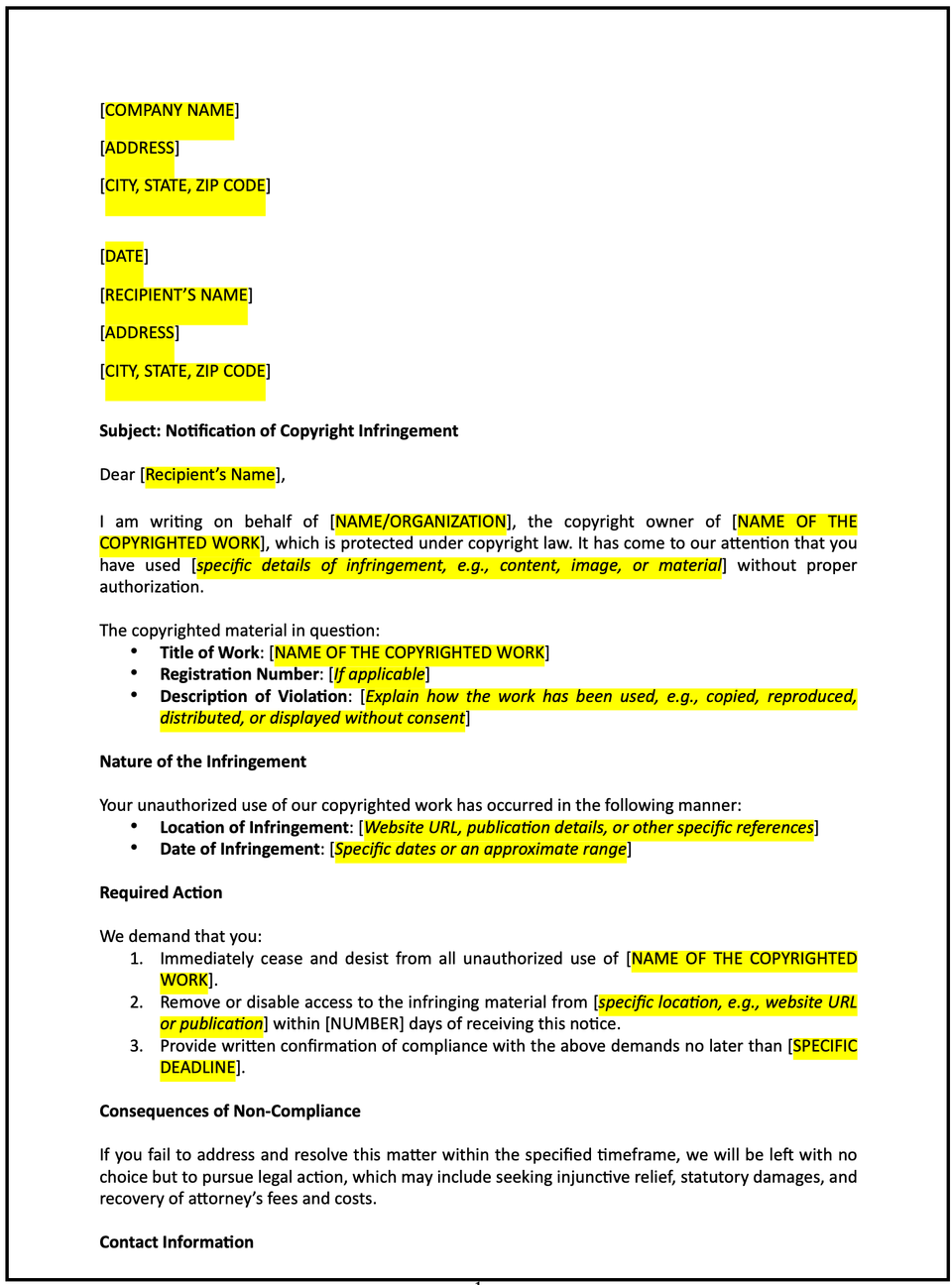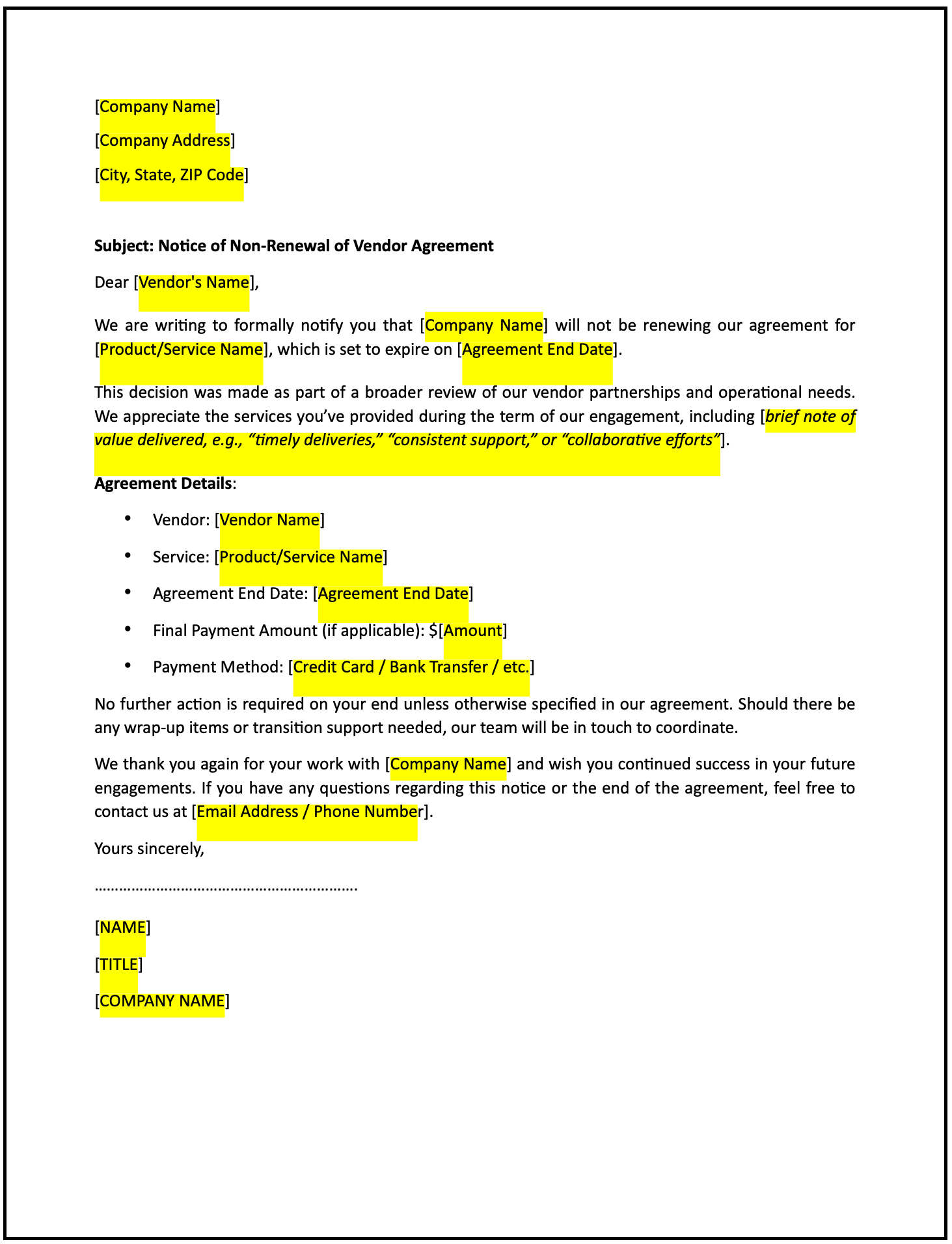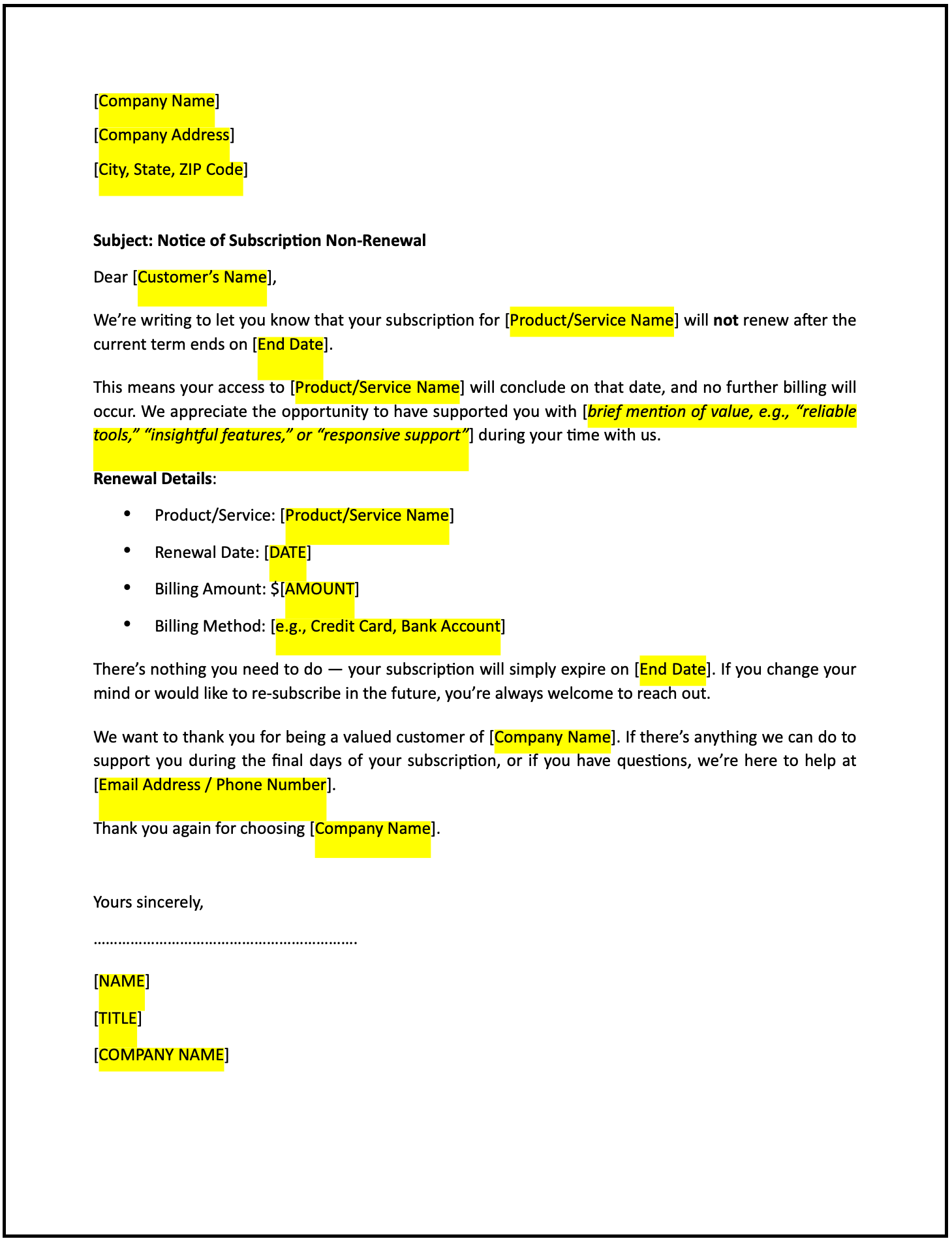Copyright infringement cease and desist letter: Free template

Copyright infringement cease and desist letter
A copyright infringement cease and desist letter is a formal notice sent to an individual or organization to inform them of unauthorized use of protected content. This type of letter serves as a legal warning and requests immediate cessation of the infringing activity. It outlines the nature of the copyright violation, establishes your ownership, and presents a clear demand for action—often with proposed steps for resolution.
Sending this letter is a critical step in protecting your intellectual property rights and provides a documented record of your efforts to enforce those rights before pursuing legal remedies.
How to use this copyright infringement cease and desist letter
- Open with an introduction: Address the recipient formally and explain the purpose of the letter. Make it clear that this is a notice of alleged copyright infringement.
- Identify the copyrighted work: Describe the protected material in detail, including its title, author or creator, publication date, and registration information (if applicable).
- Outline the infringement: Explain how the material is being used without authorization. This could include unauthorized reproduction, distribution, public display, digital publishing, or other uses. Provide concrete examples or evidence, such as screenshots, copies of content, or links to web pages.
- Cite ownership and legal basis: Reaffirm your legal ownership of the work and reference applicable copyright laws, such as the U.S. Copyright Act or equivalent legislation in your jurisdiction.
- Demand cessation of use: Clearly state that the recipient must immediately stop using the copyrighted material and remove all infringing copies from distribution, publication, or display.
- Propose resolution: Offer a constructive path forward, such as a written agreement to cease use or entering into a licensing discussion. This allows you to resolve the matter without immediate legal escalation.
- Warn of legal consequences: Inform the recipient of the legal steps you are prepared to take if the infringement continues. This may include filing a lawsuit, pursuing damages, or seeking an injunction.
- Maintain a professional tone: Keep the language firm but respectful. Focus on the facts and present your request in a structured, solution-oriented manner.
- Provide contact information: Include your name, title, organization (if applicable), email address, and phone number to enable the recipient to respond or discuss the matter.
Benefits of using a copyright infringement cease and desist letter
- Promotes clarity: Clearly communicates the nature of the infringement and your expectations for resolution.
- Reflects professionalism: Demonstrates that you are approaching the matter through formal and appropriate channels.
- Encourages compliance: Sets out specific steps for the recipient to take and encourages voluntary resolution.
- Builds credibility: Establishes your role as the rightful copyright holder and your willingness to defend your rights.
- Supports legal enforcement: Creates a paper trail of your actions, which strengthens your position if you proceed with legal action.
Tips for writing an effective copyright infringement cease and desist letter
- Be specific: Clearly describe the work being infringed and how the infringement has occurred.
- Use professional language: Keep the tone respectful and assertive—firm, but not hostile.
- Provide legal context: Reference relevant laws or registration numbers to support your claim.
- Highlight required actions: Clearly outline the steps the recipient must take to stop the infringement.
- Include actionable steps: Make it easy for the recipient to confirm compliance or propose a resolution.
- Keep it focused: Stay concise while covering all critical points necessary to enforce your rights effectively.
Frequently asked questions (FAQs)
Q: What details should I include in this letter?
A: Include a description of the copyrighted work, examples of infringement, a demand for immediate cessation, and a reference to applicable laws or registrations.
Q: Should I personalize the letter?
A: Yes. Addressing the recipient directly and citing specific infringing uses demonstrates professionalism and credibility.
Q: Who typically sends this letter?
A: Copyright owners, attorneys, publishers, or authorized representatives acting on behalf of rights holders.
Q: How formal should this letter be?
A: The letter should be professionally written, clearly structured, and legally sound, while maintaining a respectful tone.
Q: When should this letter be sent?
A: As soon as the infringement is identified, to limit any further misuse or distribution.
Q: Can this letter include a licensing proposal?
A: Yes. If appropriate, you can propose licensing terms as an alternative to discontinuation, which may be beneficial to both parties.
Q: Is acknowledgment from the recipient required?
A: Yes. Requesting written acknowledgment confirms that the recipient has reviewed the letter and understands the request.
This article contains general legal information and does not contain legal advice. Cobrief is not a law firm or a substitute for an attorney or law firm. The law is complex and changes often. For legal advice, please ask a lawyer.


